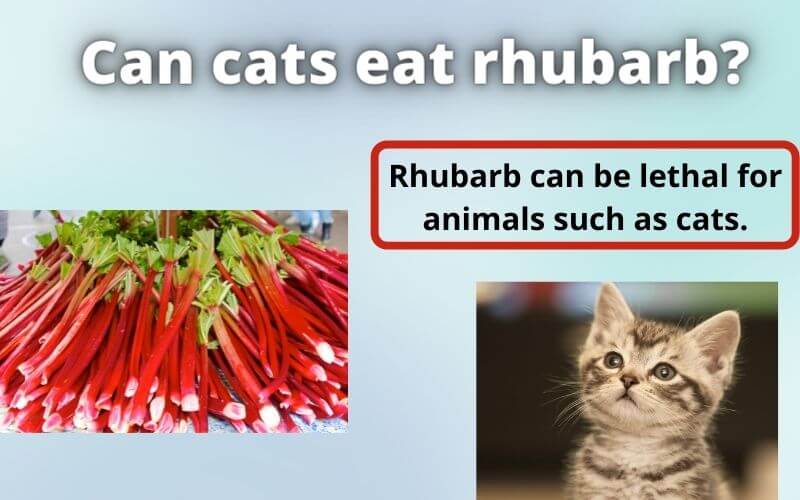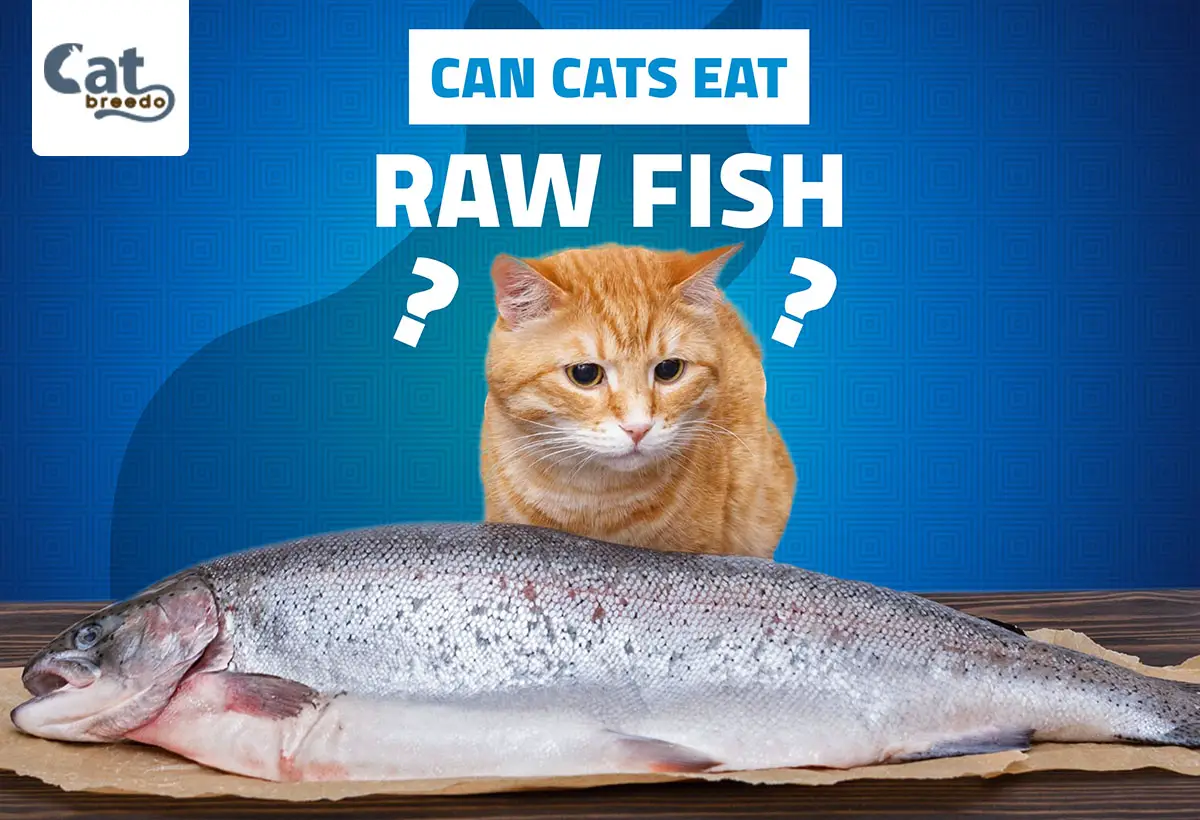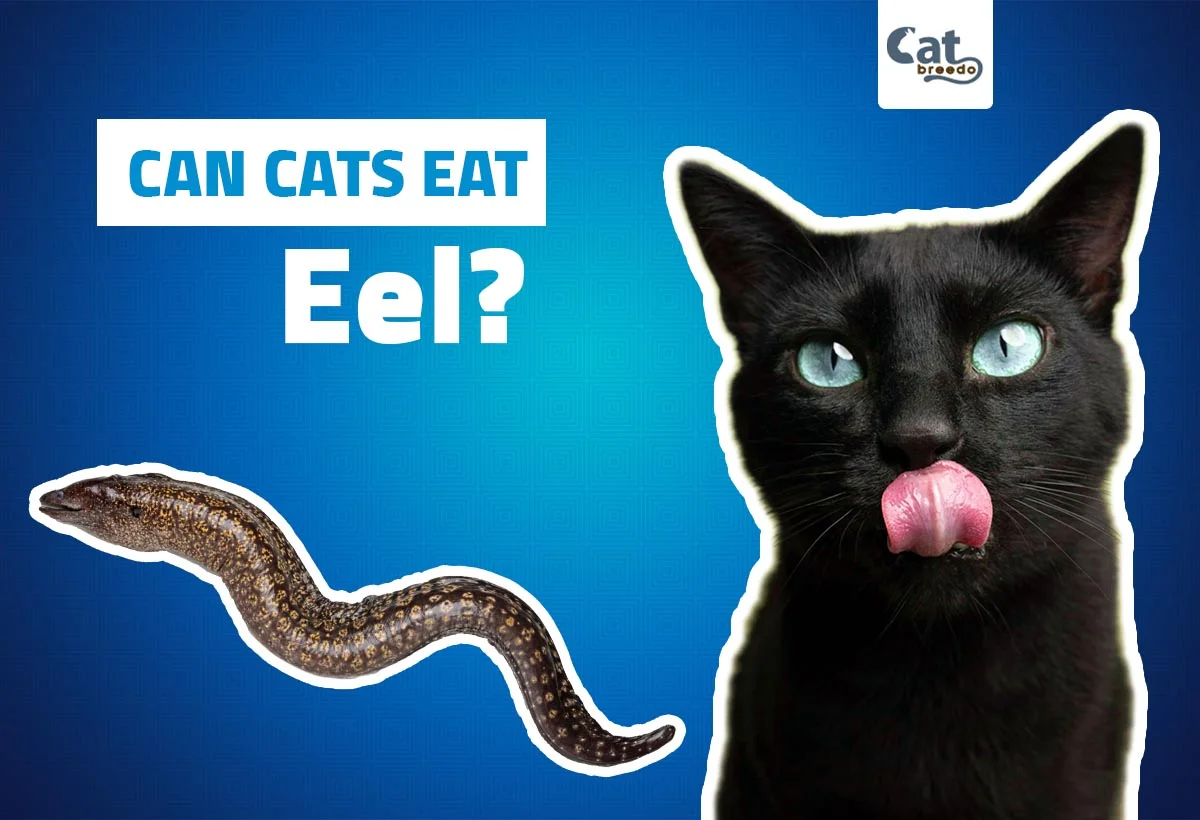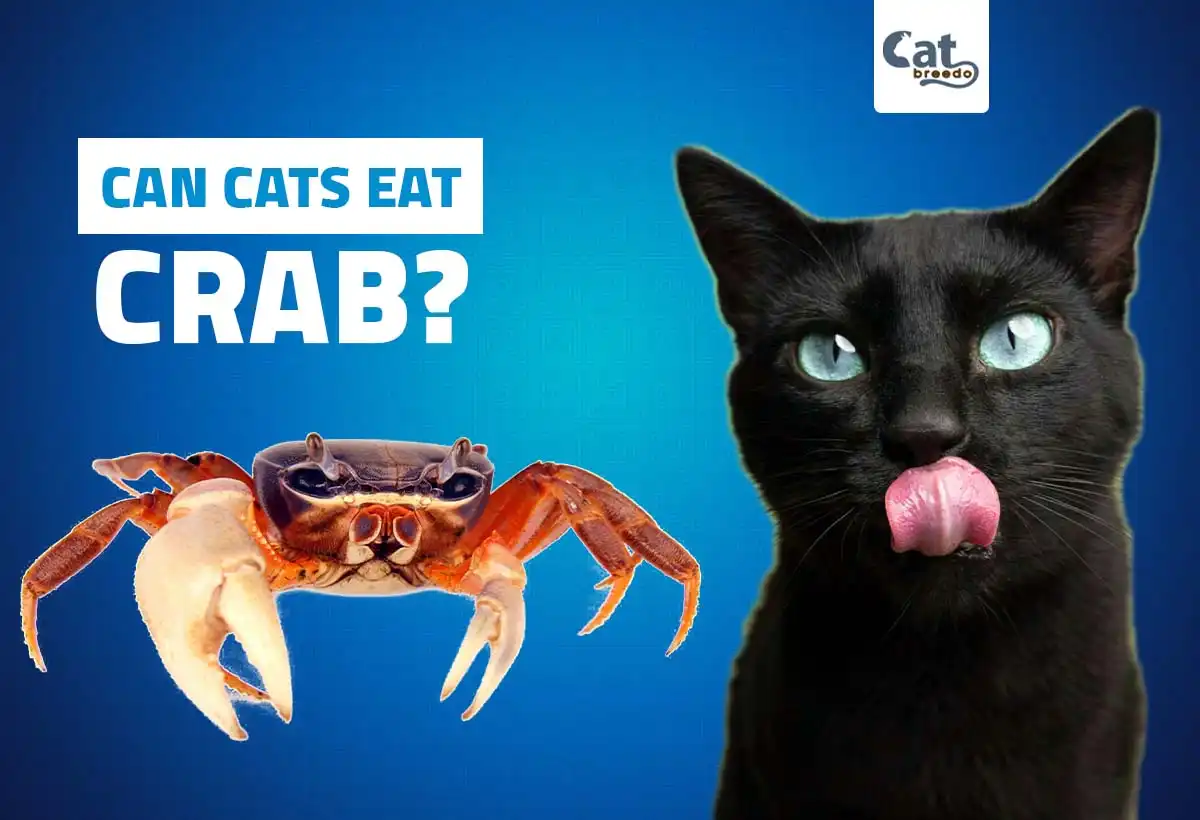Rhubarb is a plant that is commonly grown in the United Kingdom, Washington, China, and also in the Northwestern states of Oregon in the United States. It is also known as a pie plant. It is edible and is prepared in different ways.
Are you want to know about Can cats eat rhubarb? then read this blog completely. These include cooking and softening it with sugar and then using it to make crumbles, pies, tarts, and custards.

It also has some medicinal uses as it can be used as a laxative. However, its leaves can be poisonous as they are rich in oxalic acid and soluble oxalate crystals, which are toxic to kidneys. Humans consume this plant after cooking, which renders it safe to consume in adequate amounts.
Can cats eat rhubarb?
Humans have been using rhubarb for years in their food and medicine in different parts of the world after processing and treating it to remove its oxalate compounds.
The question arises whether it is safe to be eaten by animals. Pets feed accidentally or intentionally on plants, and many cases of toxicity are also reported in veterinary emergencies annually. So it’s natural to think about the toxic effects of commonly grown herbs and plants like rhubarb.
Rhubarb can be lethal for animals such as cats. Consuming it in more significant amounts can lead to oxalic acid, and calcium oxalate crystals in the rhubarb leaves accumulating in the urinary tracts of cats and lead to acute kidney failure. It can also cause low calcium levels, tremors, diarrhea, and vomiting if consumed in average amounts. Moreover, it can lead to explosive diarrhea due to gastric irritants and high fiber content.
How much rhubarb is toxic?
Rhubarb also has some nutritional value as it contains Vitamin K and Vitamin C. It is 95 percent water, 5 percent carbohydrates, and 1 percent protein.
The lethal dose of pure Oxalic acid is 15 to 30 gm. The amount of oxalic acid present in rhubarb leaves is 0.5 percent. A 140-pound man needs to intake about 10 pounds of rhubarb leaves for it to be lethal.
The petioles that are the rhubarb stalks contain a lesser amount of oxalic acid. Another poisonous substance present in the rhubarb plant known as anthraquinone glycoside might be responsible for most cases of poisoning.
Rhubarb, even in moderate amounts, has side effects like diarrhea, vomiting, and tremors. A slightly greater amount is lethal, especially for cats, as it causes kidney damage.
Is rhubarb OK for cats?
Rhubarb contains oxalic acid and other unidentified toxic compounds, which lowers the blood calcium levels by binding to calcium in the gastrointestinal tract and not letting it get absorbed into the bloodstream. Therefore, hypocalcemia in cats caused due to the consumption of these compounds can lead to seizures, diarrhea, severe vomiting, and tremors.
Moreover, its laxative properties and fiber content cause gastric irritation and diarrhea. The loss of body fluid can cause severe dehydration in your cat, leading to hypovolemic shock and then coma.
Check the latest article can cats eat yams
On the other hand, oxalate crystals can accumulate in the kidneys and urinary tract and cause direct damage to the kidneys. Consequently, it can lead to bloody urine, indicating severe kidney injury. This will eventually lead to Acute kidney failure, which is life-threatening.
WHAT DO I DO IF MY CAT ATE RHUBARB?
If you come to know that your cat has eaten rhubarb, then look for the signs of toxicity. Some common signs of rhubarb toxicity in pets include seizures, tremors, diarrhea, vomiting, bloody urine, altered thirst patterns, salivation, lethargic behavior, and drowsiness.
If you notice any such signs, you should call the vet or rush your pet to the nearest veterinary hospital emergency. While you wait for the medical team to arrive, you can help your pet by inducing voluntary vomiting so that all the ingested contents of the plant are thrown out of the stomach, and more harm can be prevented.
The cat might need to be admitted to the hospital for a fluid replacement to prevent and treat any dehydration and shock. The doctor will inject medications for seizure control and hypocalcemia. Your pet might be treated with gastric lavage to remove the ingested plant contents. This helps prevent the remaining rhubarb from getting absorbed in the blood and causing further toxicity.
Frequently Asked Questions
Are cats attracted to rhubarb?
Rhubarb has a very bitter taste. It is thus unlikely that animals such as cats and dogs would be attracted to it. They wouldn’t want to eat this plant, and if they do, it should only be an accident.
Can cats eat rhubarb yogurt?
Rhubarb yogurt does not contain lethal amounts of oxalic acid. So if your cat eats rhubarb yogurt, then oxalic acid alone would not cause any toxicity. However, the sugar that the rhubarb yogurt is made of might cause hypersensitivity in your cat.
Have a look at can cats eat turnips
This sugar is called Xylitol, and it might cause toxicosis in most cats. Moreover, the additives and preservatives in rhubarb yogurt might injure your cat’s health. Therefore even rhubarb yogurt is not recommended for consumption in cats, let alone the raw plant.
Can cats eat rhubarb pie?
A rhubarb pie has less oxalic acid levels than raw rhubarb leaves, and it might not be toxic or lethal for your cat. However, the high sugar and cholesterol content would harm your cat’s health. Therefore the consumption of rhubarb pie should be discouraged for cats.
Can cats eat rhubarb stalks?
Rhubarb stalks also have dangerously high levels of oxalic acid. Rhubarb leaves are poisonous to pets such as cats and dogs. They should be kept out of the reach of pets to avoid poisoning. If they are found to have any toxic effects from the rhubarb plant, then they should be treated as soon as possible to save their life.
Keeping in view the concentrations of toxins in rhubarb stalks called petioles, they should also not be eaten by cats.
Conclusion
The facts about the composition of the rhubarb plant have made it quite clear that it is not safe for consumption by cats at all. Raw rhubarb leaves are toxic due to their high oxalate and fiber content.
On the other hand, rhubarb yogurt, rhubarb pie, and other rhubarb dishes contain high sugar and fat content and remain harmful to the cat’s health despite being processed and cooked. Therefore, it is highly advisable to avoid feeding cats rhubarb plants or products containing its leaves.





Leave a Reply